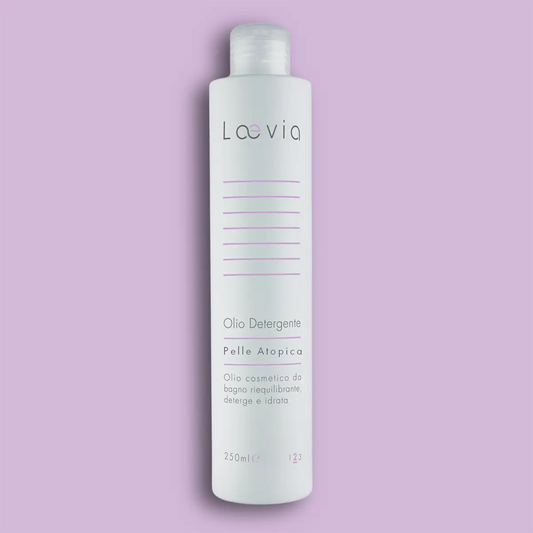Genes, family history, altered skin barrier and water imbalance: these are the elements that can lead to the development of atopic dermatitis.
Genes are mainly involved in the development of atopic dermatitis, but they are not alone. In fact, their action is stimulated by various factors, including:
- Familiarity, or a predisposition to the disease inherited from mum and dad
- Environmental agents, irritants and allergens, related to both "indoor", domestic, and "outdoor", external contexts.
What is of concern are precisely the environmental agents, considered among the most modern risk factors for atopic dermatitis, the constantly growing number of which increasingly undermines the health of the skin barrier. Defending it is essential because it represents a shield against the onset of the disease.
FLG: what will this acronym be?
It is short for Filaggrin (FLG), the gene that makes the difference in the development of atopic dermatitis. In fact, the latest scientific research attests that the mutation, as well as the loss of functionality of this gene, exposes children who are carriers to a greater probability of disease, compared to those in whom the FLG gene is normal.
This mutation should not be considered a certain or absolute cause of disease. According to several studies, in 40% of children who have this mutation written in their DNA, the disease can still remain silent, without ever manifesting itself.
FLG but above all environmental factors
This data would confirm, once again, the great influence that environmental factors have on the disease, to which children may be differently sensitive, as well as on lifestyles and changes in the domestic context that have taken place over the last 50 years, which have increased the presence and exposure to pollutants and allergens, dust mites and food allergens in particular.
It is hypothesized that the interaction between environmental and genetic factors can lead to the flare-up of atopic dermatitis. Therefore, where possible, it is important to prevent the disease by avoiding its triggers.
In this sense, keeping dust mite allergens away is important even when the relevant allergy has not already been discovered.

But what is filaggrin?
It is a molecule, in this case a protein, which regulates the differentiation of the epidermis. Filaggrin in turn binds to another protein, keratin, which mostly makes up epithelial cells, thus ensuring a barrier effect.
Ceramide deficiency and skin imbalance
The skin maintains a good balance thanks to the presence of water, ceramides and in general fatty acids and lipids. It is above all the alterations of these lipids that modify the water balance, and therefore weaken the barrier function. It has been scientifically demonstrated that in atopic skin there is a lower presence of ceramides (especially ceramide3), therefore leading to the hypothesis that skin dryness, a typical feature of atopic dermatitis, is also due to a lack of ceramides.
Familiarity
It is another key element in atopic dermatitis; in fact the hereditary factor seems to have an important role in the development of the disease. The latest estimates show that if a parent suffers from atopic dermatitis, in 60% of cases they will also pass the problem on to the child, with an increased risk of up to 80% if both parents are atopic. Instead, in a family where neither parent suffers from atopy, the probability of developing the disease would be lowered to around 20%.
The importance of protecting the skin barrier
Protecting the skin barrier is essential. In fact, it performs several functions:
- Promotes the interaction between the external environment and keratinocytes (the most abundant cell type in our skin)
- Defends against the penetration of external substances such as toxic and irritating environmental agents
- It deals with regulating the skin's water loss. Which is made up of approximately 70% water and the remaining 30% proteins, fats, minerals and other substances
Finally, there is another important aspect why it is essential to protect the skin barrier. In fact, it seems that its alteration could also be responsible for less defense activity at a local level. That is to say that, in subjects suffering from atopic dermatitis, bacteria and antigens would have greater ease of penetration and action, even stimulating the activity of T cells more, which are linked to an immunological and inflammatory chain reaction (dermatitis contact allergies and irritant contact dermatitis).
How to restore the skin barrier?
If it is impossible to act on the genetic causes of atopic dermatitis and on some factors such as, for example, family history, it is true that a lot can be done to preserve the health of the skin as much as possible, for example by reducing exposure to allergens and harmful substances, such as smoking and irritating substances, and taking care of the skin, cleansing and hydrating it abundantly with specific products for super sensitive skin, widely tolerable and free of potentially allergenic substances, which are tested for the presence of nickel and do not contain parabens , perfumes and dyes.





